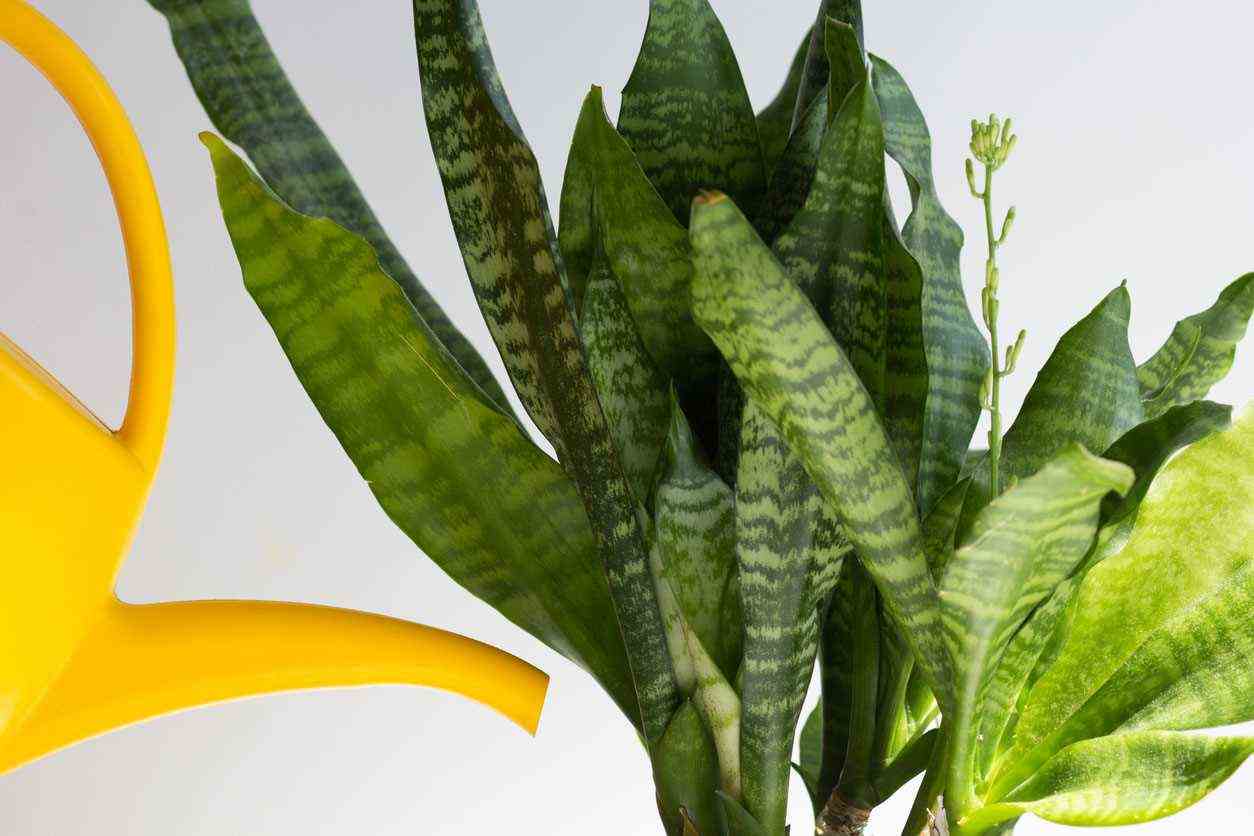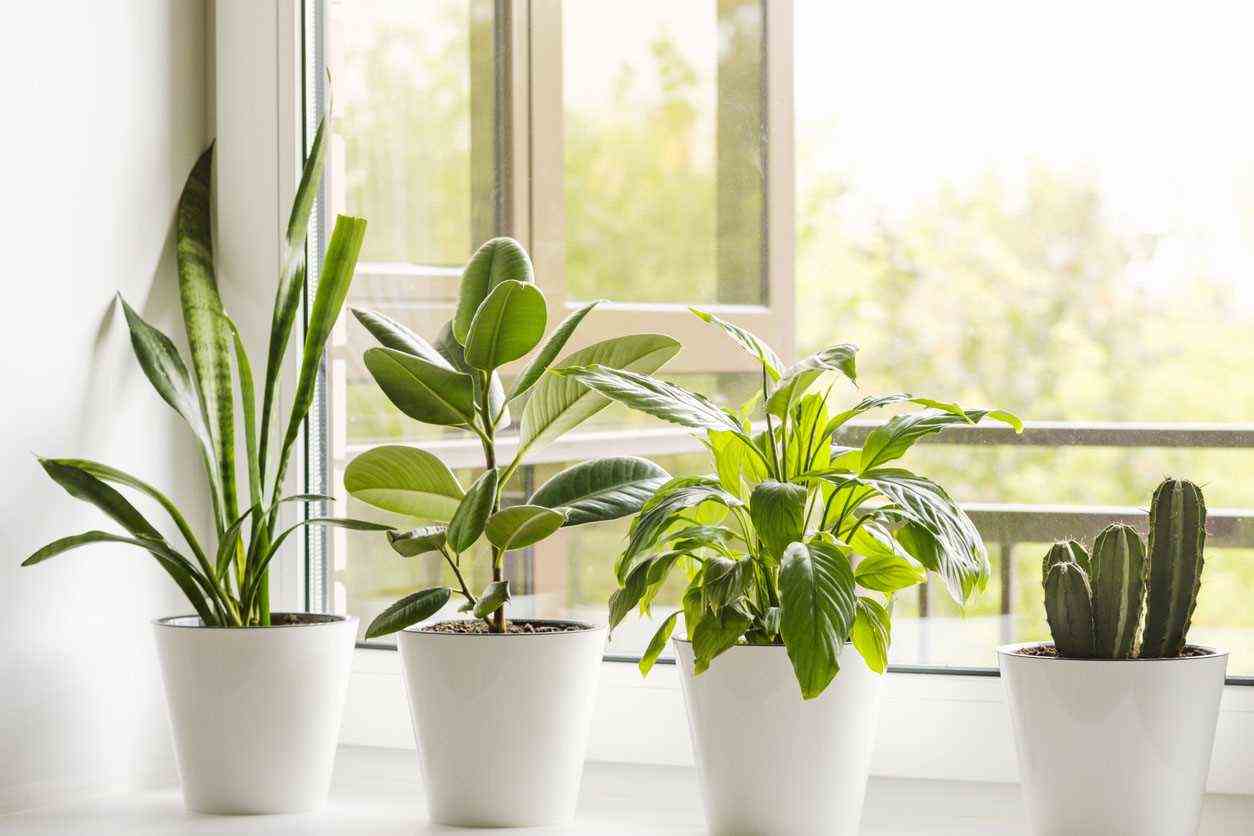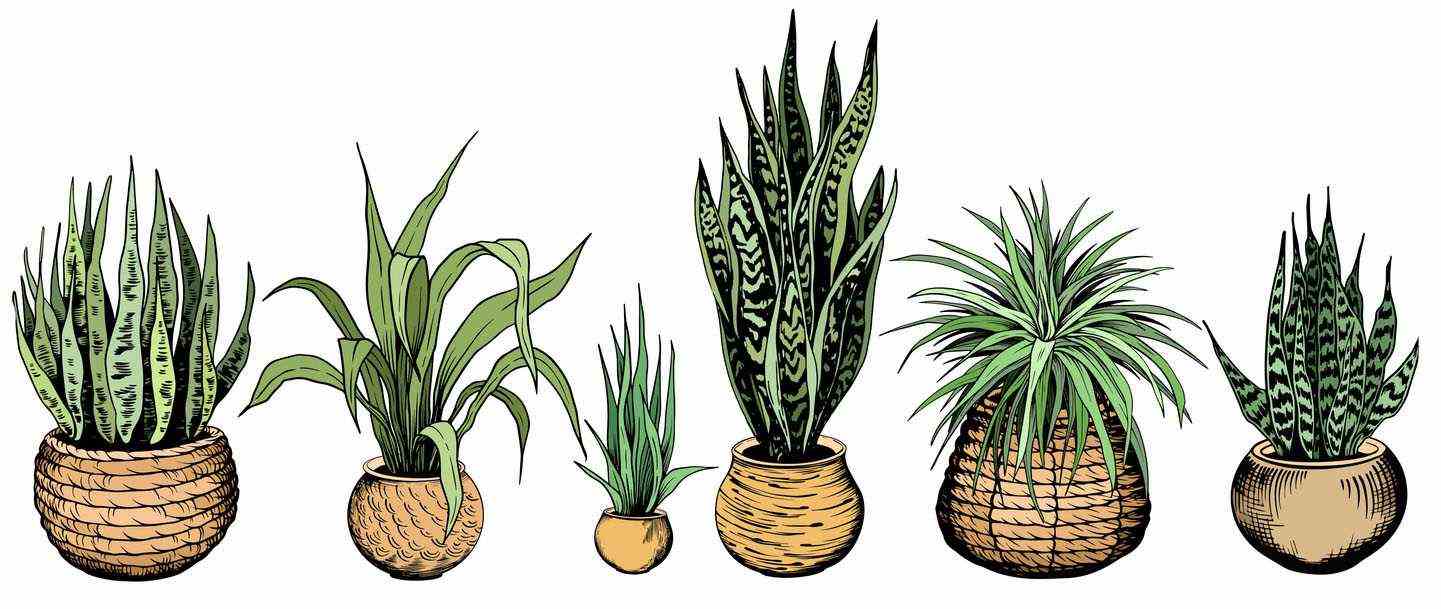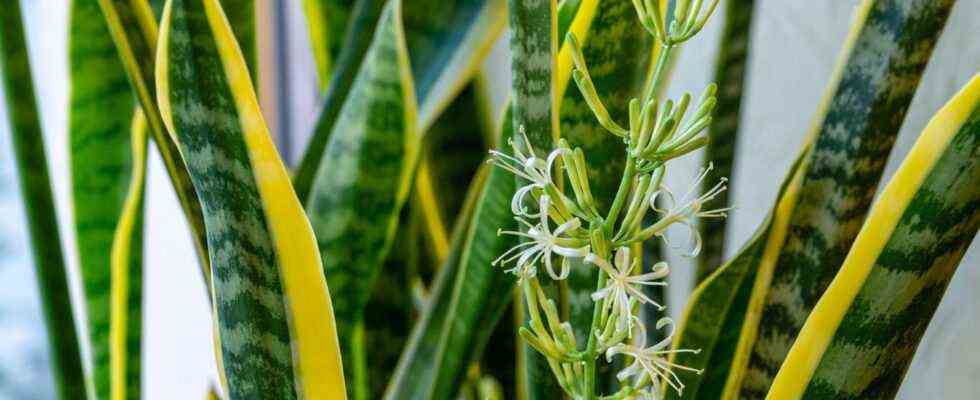Presentation of the Sansevieria
Fact sheet : | |
|---|---|
| Scientific name | Sansevieria trifasciata |
| Family | Agavaceae, Asparagaceae, Liliaceae |
| Other name | mother-in-law’s tongue, sansevière, snake plant |
| Ethymology | See at the bottom of the page |
| Origin | Kenya, Madagascar, Namibia, Angola, India, Indonesia. |
| Dimensions | From 80 cm to 1.80 m high in 10 years, for the most vigorous species. There are also dwarf forms. |
| Flower color (s) | WhiteDark green |
| Leaf color (s) | Dark green |
| Appearance of flowers | 0.5 to 1 cm long, white, with 6 lobes, fragrant, united in panicles, in spring, on adult plants. |
| Appearance of leaves | Its leaves are green or marked with silvery gray (variegated varieties). |
| Type of plant | Indoor tropical plant |
| Vegetation | Perennial |
| Foliage in winter | Persistent |
| Flowering |
Jan.
Feb.
Mar.
Apr.
May
June
Jul.
August
Seven.
Oct.
Nov.
Dec. |
Culture sheet: | |
|---|---|
| Planting |
Jan.
Feb.
Mar.
Apr.
May
June
Jul.
August
Seven.
Oct.
Nov.
Dec. |
| Exposure | Bright light |
| Ground | Drained, Soil, Sandy |
| Humidity | Low |
| use | Pot, Planter, Bin, Possible outside (in the south) |
| Multiplication | Cutting, Division |
| Disease (s) and pest (s) | Mealybugs |
Cultivation of sansevieria
Air humidity
No special requirements but regular washing of the foliage is recommended.
Minimum winter temperature
From 10 to 13 ° C, but it tolerates a higher heat and a few degrees less, provided it is dry.
Brightness / exposure
Bright light all year round. All species support even moderate light but they will gain in beauty with good light. Partial shade is accepted.

Ground
It must be more consistent than for other tropical plants, made up of two parts of fertilized soil and one part of decomposed leaf soil, with a little sand to avoid settling; the pots will be small, adapted to the balance of the plant.
you can add a good draining layer to the bottom of the pot.
Fertilizer
From May to September, once a month a liquid fertilizer for cacti, after watering.
How to water the sansevieria?

It is necessary to space them out already in summer so that the compost dries between two water inputs; they will be reduced during the winter, to prevent rotting of the base of the plant.
So count every 8 to 15 days from March to October, every 4 weeks thereafter.
Repotting the sansevieria
In March, every 3 or 4 years, when the tufts lack rigidity or are too cramped in the pot. Sansevières adapt to being cramped and can stay in the same pot for several years. Fleshy, cream-colored roots often appear on the surface, but repotting is only necessary when the pot cracks under their pressure. It is better, however, to move ahead of this stage slightly.
In upright plants, repot when the leaves take up most of the surface of the mixture. For S. t. ‘Hahnii’ and its rosette varieties, repot when the roots are so tightly packed that you can hardly see the mixture. Repotting is best done in early spring.
Choose stoneware pots for erect plants. If there is no need to repot, simply renew the top layer of the mixture, being careful not to damage the superficial roots.
How to multiply sansevierias by cuttings or division?
Sansevières multiply by leaf cuttings or by division of tufts. The second method gives better results. With a knife, loosen the tufts from the root ball when the leaves are 15 cm high in upright species and 5 cm in rosette species.
Most tufts have a few roots: they can be planted directly in ordinary mixture. The others should be placed temporarily in a mixture of peat and sand.
If you want to proceed by cuttings from the leaves, cut them crosswise into 5 cm segments. Note the top and bottom.
Insert 3 or 4 segments 1.5 cm deep in an 8 cm pot filled with a moist mixture of peat and sand. Expose to bright light in a warm room and water sparingly to keep the mixture barely moist. The segments will eventually produce rhizomes, but you have to be very patient.
Variegated forms (S. trifasciata) cannot be multiplied in this way because they would restore the typical species, it will be necessary that the cuttings have at least a piece of rhizome provided with a bud. Whole leaves will be able to take root in plain water, but this will take a long time and the plants will be completely green.
When the new rhizomes are large enough to be placed in regular mixture, it is best to remove the old leaf segments.

Disease and pests
Overall, sansevières are plants very resistant, sometimes attacked by mealybugs.
Otherwise, watch for the presence of weevils. The damage they cause to the leaves of sansevières is irreparable.
Species and varieties of Sansevieria
The genus includes about 60 species, all herbaceous, leathery, with underground rhizomes and caulescent leaves, solitary or arranged in a rosette; in some cases they are rigidly nested one in the other and form a small caule, representing a fan or a stem with sheathing leaves; at least one species emits stolons at the ends of which new shoots are born. Sporadically we sometimes obtain species with cylindrical and rigid leaves such as Sansevieria cylindrica.

Sansevieria cylindrica is a rare species whose cylindrical, slightly arched leaves are 2.5 cm in diameter and can reach 90 cm in height. The rigid dark green leaves have longitudinal furrows and gray-green horizontal bands.
Sansevieria liberica has rigid and thick leaves that can reach 90 cm. They are striped lengthwise in broad bands of almost pure white.
Sansevieria zeylanica has gray-green leaves with dark green horizontal bands, arranged in a loose rosette. They measure 60 to 75 cm.
Sansevieria trifasciata has dark green leaves 30 to 45 cm long, slightly twisted into a spiral. The species is not as well known as the various forms that have emerged from it.
- Sansevieria trifasciata ‘Bantel’s Sensation’, retains the mottling of the species but adds cream longitudinal bands to the top of the large leaves.
- Sansevieria trifasciata ‘Craigii’, the leaf margins show broad creamy yellow bands. Finally, the most widespread variety, S. t. ‘Laurentii’, is characterized by its leaves edged in yellow. In all of them, the sword-shaped leaves can reach 1.20 m in height.
- Sansevieria trifasciata ‘Moonshine’, fairly recent, has very pale green leaves 23 to 30 cm long and 7 to 10 cm wide. They are hemmed with a thin dark green line.
- Sansevieria trifasciata ‘Hahnii’ does not look like the previous forms. Indeed, it comes in a rosette and does not exceed 15 cm in height. It is found in different patterns and colors. S. t. ‘Golden Hahnii’, by
- Sansevieria trifasciata ‘Golden Hahnii’ example, has green, striped and marginally bright golden yellow leaves, while S. t. ‘Silver Hahnii’ has silvery green leaves, delicately smeared with dark green.
History and etymology of sansevieria
The name of this genre is due to an error dating from the end of the 18th century and which has continued. The first known species was observed by the Neapolitan botanist Vincenzo Petagna, who sent it to the Swedish naturalist CP Thumberg, telling him that he wanted to dedicate it to PA Sanseverino, Count of Chiaromonte, creator of a garden of rare plants in Italy. from South.
But, perhaps because of a linguistic misunderstanding, or for some other reason, Thumberg was wrong and called the plant Sansevieria because there really was a Raimondo di Sangro, prince of Sansevero, soldier and inventor, but who did not had nothing to do with botany. However, some authors today give it the name it should have worn: Sanseverinia.
Almost all species are African; however, a species native to Ceylon, S. zelanica, is often confused with Sansevieria trifasciata which closely resembles it.

